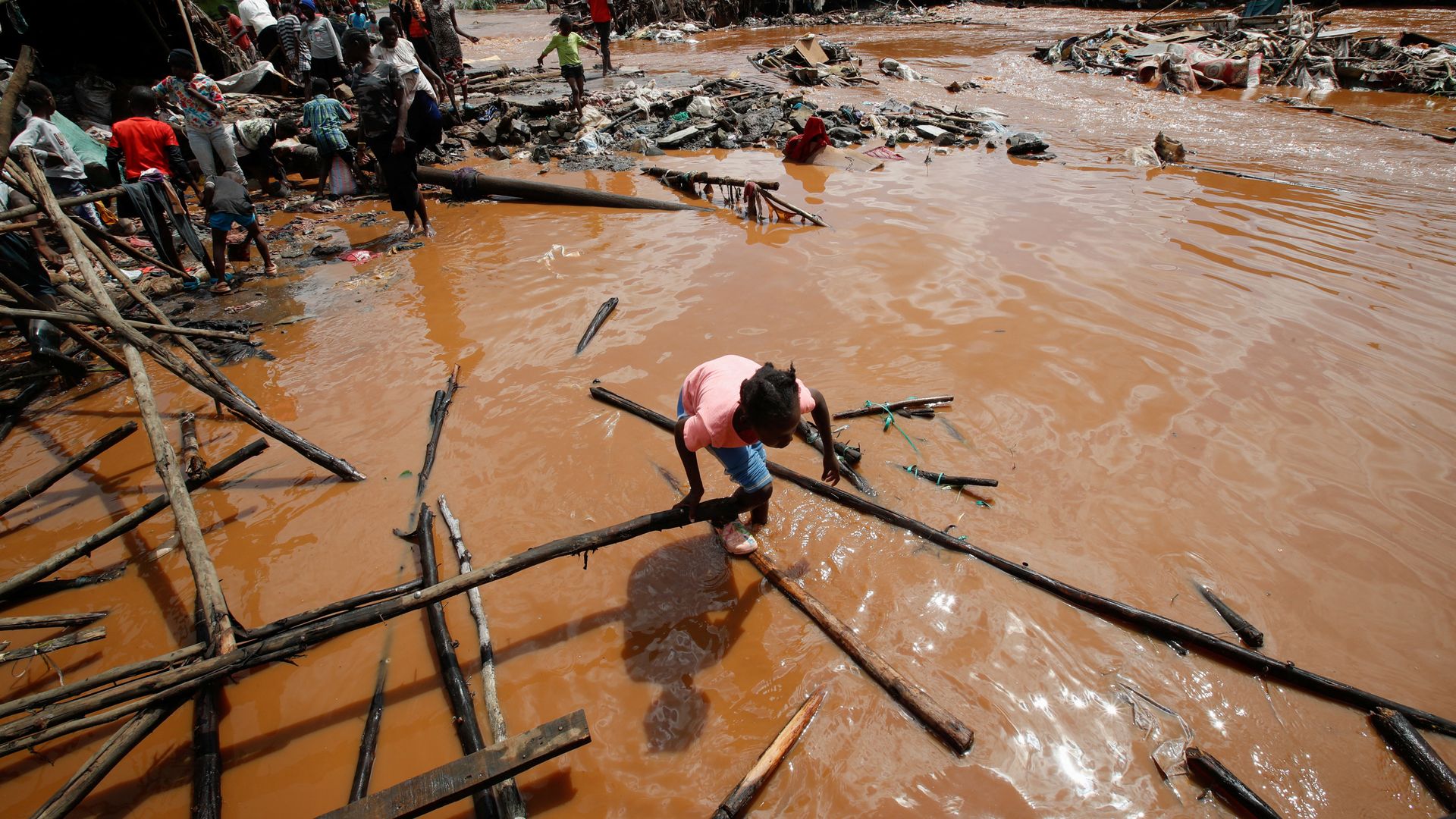Devastating flooding has struck east Africa, with extreme rainfall wreaking havoc across several countries.
Recent weeks have seen dozens of deaths in the region related to torrential rainfall, which is set to peak in the coming days.
The situation has worsened so much that last week, Burundi – one of the world’s poorest countries – called for international help to try and grapple with the floods.
In Kenya’s capital, Nairobi, once busy streets were turned into rivers. 35 people have died since mid-March, according to the Kenya Red Cross Society.
The Nairobi River and the Athi River in Kenya have both burst their banks, leading to over 40,000 people having been displaced since March.
The most affected parts of Kenya are in Nairobi and Machakos County, which lies just east of the city.
While issues of extreme rainfall have been ongoing during this year’s March-to-May rainy season, they have taken a turn for the worse in recent days.
Head of Kenya’s military General Francis Ogolla among nine killed in helicopter crash
Kenya: Two killed after passenger plane heading to tourist resort collides with training aircraft
Hyena attack in Kenya leaves one dead and two injured
Edwin Sifuna, a member of the Kenyan senate, shared a video that shows an entire neighbourhood flooded.
He said: “The situation in Nairobi has escalated to extreme levels. The county government for all its efforts is clearly overwhelmed. We need all national emergency services mobilised to save lives.”
In the video, the water is almost up to the rooftops of some houses, while a group of Kenyans are seen to have sought refuge on top of one home.
Climate experts have linked the ongoing flooding across the region to the El Nino weather phenomenon.
Shocking pictures have emerged from Kenya, showing the severity of the developing situation.
Jean Marie Sabushimike, a geographer and disaster management expert who teaches at the University of Burundi, said: “It must be said directly that these floods are associated with climate changes that affect Burundi like other countries in the region.”
As well as climate change, the impact of the flooding is exacerbated by poor land-use, he added.
In Burundi, where 80% of its 13 million people are employed in agriculture which can be hit hard by floods, rising waters of Lake Tanganyika caused flooding in the city of Bujumbura – the nation’s economic capital.
Interior minister Martin Niteretse previously said: “We are issuing this statement to ask our development partners to combine efforts with the state of Burundi to help all people affected by these disasters. We need that support.”
A major highway in Bujumbura, the Boulevard du Japon, has flooded entirely as the extreme water levels created the surreal sight of rangers being forced to enter the waterlogged Rusizi National Park in a canoe.
Read more from Sky News:
Hunt for Home and Away star accused of assault
Suez Canal traffic falls 66% after attacks on Red Sea
Skies over Athens turn ‘apocalyptic’ orange
Joachim Ntirampeba, a resident of Gatumba, a village near the Congo border, said that while he had seen flooding a number of times beforehand, it had never been this bad.
In Somalia, four children are said to have died in the past week, as over 800 have been displaced by the floods.
Of the four dead, three were young boys in Somaliland, and the fourth was a six-year-old girl in Hirshabelle State.
Keep up with all the latest news from the UK and around the world by following Sky News
Be the first to get Breaking News
Install the Sky News app for free
Tanzania has also been hit badly by flooding in recent weeks, with reports of over 50 deaths.
However, the Kenyan meteorological society has warned that rains are expected to peak this week.
Alongside the threat to life, destruction of property and long-term damage, there are concerns that the floods could lead to outbreaks of diarrhoea and cholera.






